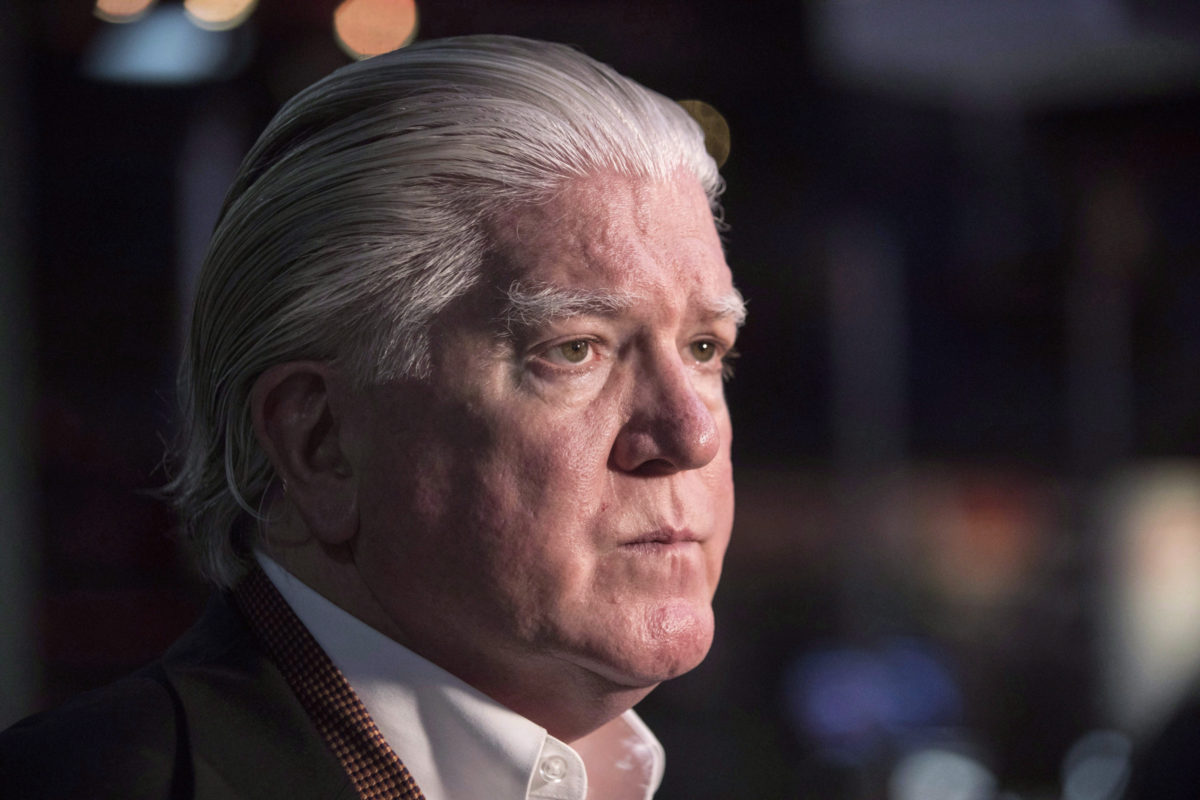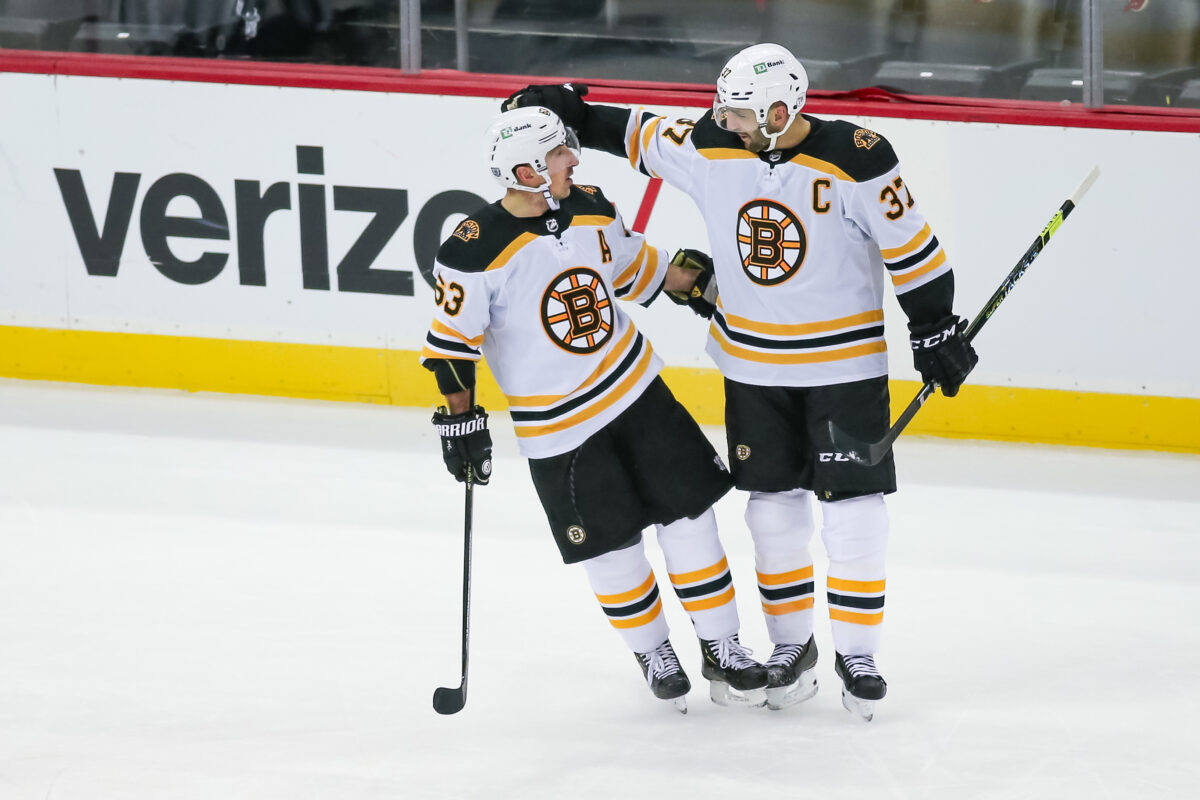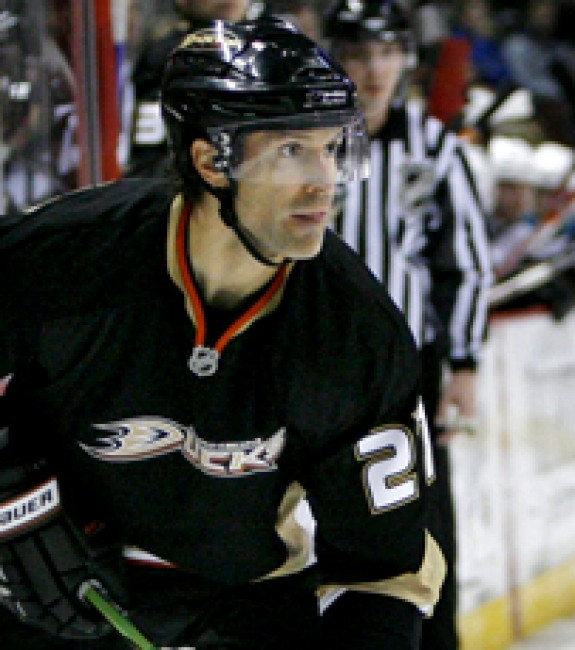Brian Burke has seen just about everything during his hockey career. From his time as a player to becoming a Harvard-educated lawyer to his time in front offices across the league, Burke is well-known. In 2020, he published his book, Burke’s Law: A Life in Hockey, where he highlighted various moments of his career, including his design for the ideal NHL roster. This breakdown is what Burke says he used to construct his teams, most notably the 2007 Stanley Cup Champion Anaheim Ducks. This is one of my favorite books, so I wanted to adopt Burke’s model and apply it to the 2022-23 Boston Bruins.
There are some caveats to this exercise. First, for the sake of argument, the key injuries to Brad Marchand, Charlie McAvoy, and Matt Grzelcyk will not factor into this analysis. In a perfect world, these three would be in the Bruins’ lineup; therefore, for this front-office experiment, they will be slotted in accordingly. Second, the salary cap must be addressed.
Related: Bruins’ Mismanagement of Salary Cap By Sweeney Proving Costly
The Bruins are currently over the cap, including injured players. How do we handle this? By kicking the can down the road. It’s still the offseason, so while we wait for general manager Don Sweeney to announce the moves that will free up cap space, this project will move forward without any assumptions about which players will be moved.

I’ve started by outlining Burke’s methodology, quoting directly from Burke’s Law. Using the Bruins as the lens, we can study Burke’s methodology in relation to an NHL club to see how his ideas fit with the league today. Finally, we can debate the merits of Burke’s ideas within the modern game and see what trends can be extrapolated from his writing.
To be clear, this “recipe” is how Burke would build his team in an ideal world, which is often not the case. His teams are known to play with an edge, which is evident in his diagram.
Burke’s Recipe for Winning Teams: Forwards
In his book, Burke assigned characteristics and expectations for each position and within each line combination. His line combinations include: first-line, one player with size; second-line, two players with size; third-line, made up of size, a fighter, and disciples; and fourth-line of grit, a fighter, and disciples.
| LEFT WING | CENTER | RIGHT WING | |
| FIRST- LINE (one guy with size) | TOP SKILL SIZE (even if not a black-and-blue player) ABILITY TO FINISH | TOP SKILL FOOT SPEED FIRST POWER-PLAY UNIT 65 POINTS OR BETTER LEADER | SNIPER FOOT SPEED GREEN LIGHT TO SCORE FIRST POWER-PLAY UNIT |
| SECOND- LINE (two guys with size) | SIZE (even if skilled) SECONDARY SCORING SECOND POWER-PLAY UNIT | SECOND SKILL LEVEL RESPONSIBLE DEFENSIVELY FACEOFF SKILL | SIZE (with some bite) SCORING ABILITY SECOND POWER-PLAY UNIT |
| THIRD- LINE (size, fighter, disciples) | MUST BE SMART ABOVE-AVERAGE SKATING ABLE TO MOVE SHOOTOUT SKILL | PENALTY KILLER FACEOFF GUY HIGH HOCKEY IQ FOOT SPEED A MUST WORKAHOLIC RIGHT-HANDED SHOT | SIZE SECOND FIGHTER MIDDLEWEIGHT SKILLED AND SMART ENOUGH TO SHUT PEOPLE DOWN PENALTY KILLER |
| FOURTH- LINE (grit, fighter, disciples) | PENALTY KILLER RESPONSIBLE HARD TO PLAY AGAINST LAST MINUTE OF EACH PERIOD | SIZE FACEOFF SKILL SHOT BLOCKER SHUTDOWN ROLE AGITATOR | FIGHTER AND CAN PLAY PENALTY KILLER SPEED LAST MINUTE OF EACH PERIOD |
| 13TH FORWARD | TOUGHNESS FIGHT IN ANY WEIGHT CLASS |
In his forward group, Burke argued that he wants a physically imposing team; he calls out a need for size in five of his twelve forwards. Specifically, Burke envisions his top-line left wing, second-line left and right-wing, third-line right wing, and fourth-line center to have “size.”
In the diagram from Burke’s Law, the toughness and desire to engage opponents physically are immediately apparent. With multiple wingers assigned a fighting role, along with the extra forward being carried strictly to fight in any weight class, Burke has highlighted an area of the game that is being phased out. Players can now be asked to play tough, physical minutes without dropping their gloves or resorting to illegal checks. This toughness presents itself in a willingness to finish a clean check or stand up for a teammate in a scrum.
Another detail I found fascinating and would like to highlight is Burke’s desire for a third-line center to be a right-shot. No other position highlights a shot preference.
Bruins’ Forwards
The Bruin’s forward lineup is expected to look something like this:
| Brad Marchand | Patrice Bergeron | Jake DeBrusk |
| Taylor Hall | David Krejci | David Pastrnak |
| Pavel Zacha | Charlie Coyle | Craig Smith |
| Nick Foligno | Tomas Nosek | Marc Mclaughlin |
| Trent Frederic |
This Bruins’ roster has a bunch of veterans, a factor that matches Burke’s vision of a team, and they have a fair bit of size, but that is where the similarities end. Boston does not possess the physical presence that Burke so clearly calls for and, especially among defenders, shows a different priority. Rather than having behemoths on the blue line, Boston has sacrificed size in the name of speed and skill, a combination that hopes to generate offensive chances from the back end.

Referring to Burke’s ideal lineup, the Bruins’ first line does not have a perfect match at any position. At left wing, Marchand checks the “skill” and “ability to finish” boxes but doesn’t really match the “size” requirement. Bergeron is the closest match. He checks every box except for “foot speed”, but his IQ and positioning make up for any speed deficiency.
Finally, on the right wing, Jake DeBrusk misses most of the marks. “Foot speed” is a positive mark, but “sniper”, and “first power-play unit” are lacking. He has shown the ability to shoot but is not viewed as a scorer who drives his line. Instead, he’s a complementary piece, and plays a role on the second power-play unit, with David Pastrnak on the top unit.
Burke’s Recipe for Winning Teams: Defense
Burke’s defensive unit is also decidedly different from most NHL rosters. Like his forwards, he wants big, mean defensemen patrolling the blue line. Following the forward model, the defensive pairs are expected to have a top pairing with skill, a second pairing with size, and a third pairing with “big size” (a new one) and a fighter.
| LEFT DEFENSE | RIGHT DEFENSE | |
| FIRST DEFENSE PAIR (skill) | CAN MOVE PUCK OR LUG IT OUT OF TROUBLE TOP-END FOOT SPEED HIGH HOCKEY IQ | SIZE PLAY AGAINST TOP LINE HARD SHOT CAN SHUT PEOPLE DOWN, BUT MOVE PUCK RIGHT-HANDED SHOT |
| SECOND DEFENSE PAIR (size) | SKILL SECOND POWER-PLAY UNIT GOOD DECISION-MAKER ELIMINATE/PIN (even if no hard-finish) SOME PENALTY KILLING | SMART MOBILE FINISH, PIN/ELIMINATE SOME BITE PENALTY KILLER RIGHT-HANDED SHOT |
| THIRD DEFENSE PAIR (big size, one fighter) | PENALTY KILLER HARD MINUTES AGAINST BOTTOM-SIX FORWARDS THIRD FIGHTER | SIZE HARD TO PLAY AGAINST FIGHT WHEN NEEDED FINISH CHECKS HARD PENALTY KILLER |
Although in the first pair he calls for “skill”, collectively, the only “skill” he looks for in a given position is on the left side of the second pair, the pair that is expected to bring the size element. A common theme for Burke is difficulty to play against, and he seems to leave the offensive heavy lifting to his forwards and expects his defenders to focus on keeping the puck out of the net.
Bruins’ Defense
The Bruin’s defensive depth chart is expected to look something like this:
| Hampus Lindholm | Charlie McAvoy |
| Matt Grzelcyk | Brandon Carlo |
| Derek Forbort | Connor Clifton |
| Mike Reilly |
As with most NHL teams, the Bruins’ defensive group does not follow Burke’s mold. On the third pair, Connor Clifton on the right side highlights the chasm between Burke’s model and Sweeney’s team. Clifton doesn’t have size, he doesn’t kill penalties, and although he can finish checks and fight, he is not particularly adept at either. When he does become hyperphysical, his play tends to suffer, and he is pulled out of position for the opposition to create dangerous chances.
The Bruins also don’t match Burke’s potential pairings. One player may share characteristics, but the other differs. Charlie McAvoy and Brandon Carlo follow the Burke mold on the top two pairs, and Derek Forbort meets most of the criteria on the third pair. Hampus Lindholm is a solid option and matches the left defense role on the second pair, but might be lacking some traits for the first pair. Matt Grzelcyk and Clifton are both off the mark for Burke’s model, but that is not surprising given that they are both undersized defenders.
Burke’s Recipe for Winning Teams: Goalies
Like the defensemen, Burke’s view of goalies does not line up with the current NHL. He wants a starting goalie and a backup with clearly defined roles and an obvious difference in workload.
| STARTER | BACKUP |
| PLAY 60-65 GAMES BATTLES ELITE ATHLETE GREAT MECHANICS | GREAT WORK ETHIC IN PRACTICE PUSH THE STARTER MAKER SHOOTERS BETTER SURVIVE WITH LOW WORKLOAD POPULAR |
This is not the popular plan anymore. More and more, teams are dividing up starts between two goalies, balancing each player’s workload to prevent burnout over the 82-game season.
Burke also does not include any comment about a goalie’s ability to play the puck. Although not a requirement, today’s goalies enter the league with a level of comfort with the puck on their stick. They may not be shooting on goal like Pekka Rinne, but they are able to help their defensemen when pucks are dumped into the zone.
Burke’s goalie requirements match an older version of the NHL, wanting one guy to “own” the net and focus on stopping the puck. The ability to play the puck and act as a third defenseman to stop pucks from rimming around the boards is not addressed in Burke’s model.
Bruins‘ Goalies
Jeremy Swayman and Linus Ullmark will return as the Bruins’ goaltending tandem for the season. Both are capable starters, as shown during stretches last season, and while Swayman may get the nod as the 1A of the two, assuming both remain healthy, there will likely be a (roughly) even split of playing time. This position is the most obvious split from Burke’s teams. The Bruins are comfortable with either guy in net and have not shown the need for a clear number one who will play 70% of the games.
Swayman and Ullmark are also comfortable playing with the puck. Neither one is considered an elite puck-handler, but no one panics when they leave their crease, either.
Comparing Burke’s Model to the Bruins’ Roster
I think most teams would agree their top-line center should have strong leadership abilities. Teams love fourth-line players who are willing to block shots and commit to defensive roles, and when second or third-pair defensemen can take penalty-killing minutes away from the top pairing, it helps the team succeed. While Burke’s model has worked in the past, most notably with the 2007 Cup-winning Ducks, the team that ignited my love of hockey with their bullying style, the game has progressed enough that his model is, for the most part, outdated. Aspects remain true.

But other aspects have fallen by the wayside. A third-line winger doesn’t have to be a “second fighter” and a third-pair defenseman does not have to be willing to fight anytime, anywhere. Sure, fights still happen, and having players who are physically able to stand up for themselves and their teammates is important to limiting questionable checks. But, while the ability to fight is still important, players do not have to tap into this skill as often. Therefore building a team of fighters may be counterproductive. Similarly, the over-emphasis on size is increasingly considered outdated.
Sure, defensemen like Shea Weber, who could physically take over a game with his crushing checks, booming shot, and the gruffness that would make Chris Pronger proud of are great, but you know who else is great? Cale Makar, the reigning Conn Smythe winner, and a generational defenseman. He checks in at 5-foot-11, 187 pounds; not someone who matches the “size” description, but no team would pass on the opportunity to slot Makar into their lineup.
The Bruins’ roster has reason for optimism. With an aging lineup, there will be questions, but their top-end forward weapons and defensive unit are enough to give fans hope for a playoff appearance. If their goaltending can hold up, the team should be in the hunt for a berth.
Still, there are aspects of Burke’s model that the team could adopt. While he may have swung too far and overvalued size, he has a point. A roster that is big and physical can wear a team down in an extended playoff series. The Bruins should not sacrifice their team in the name of size, but if a mid-season acquisition presents itself that could bring in a physical bottom-six forward or second or third-pair defenseman, Sweeney should listen.
Burke’s Method Today
Burke has the championship ring to show his methods worked at one time. He enters the season chasing another ring as president of hockey operations for the Pittsburgh Penguins. His roster does not perfectly match his book’s model, but there are shades of it.
Related: Penguins ‘Window to Win’ Has Re-Opened for Brian Burke
Even as a fan of the physicality Burke’s teams bring to the ice night in and night out, the game is trending away from this style, meaning his model is soon to be obsolete. Although huge hits and scrums get fans out of their seats, today’s NHL is unbelievably fast and skilled as those players who had the size and ability to physically manhandle players are getting passed by, literally.
Games are now defined by their speed, and if a player can’t keep up, they won’t last long. This factor is why Burke’s model, while interesting and detailed, is not applicable to the current hockey landscape. It should still be studied, borrowed, and learned from, but any team that fully commits to this method will have an uphill battle to success. As the game continues to favor speed and skill, the days of brute force and physicality are falling by the wayside.